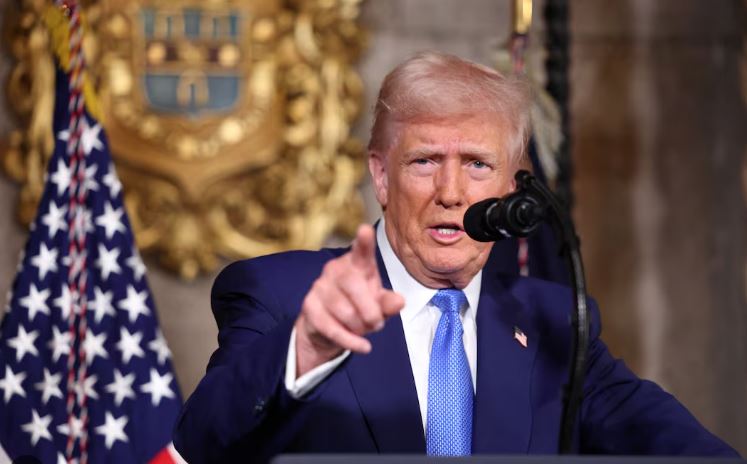President Donald Trump announced with a major trade policy change that automobiles will face a 25% import tariff which starts on April 2, 2025. The decision sets a 25% duty increase to support domestic manufacturing which impacts automobile assembly production along with essential components such as engines, transmissions and electrical parts. The U.S. government intends to alter worldwide trade operations through a policy that compels international manufacturing companies to establish production bases inside American territory.
Trump’s administration believes that these tariffs will encourage manufacturers to shift production to the U.S., thus creating more American jobs. He stated, “We’re going to charge countries for doing business in our country and taking our jobs.” While the White House expects this strategy to generate an additional $100 billion in revenue annually, critics argue that the decision could significantly increase production costs, leading to higher prices for U.S. consumers.
New Tariffs Threaten to Raise Costs for U.S. and Imported Vehicles
The auto industry, already dependent on a complex global supply chain, faces uncertainty as these new tariffs will add costs to parts and vehicles manufactured outside the U.S. Automakers, such as General Motors and Ford, are particularly vulnerable as they rely heavily on imported parts from countries like Canada and Mexico. For example, General Motors imports its Chevrolet Silverado trucks from Mexico, and Ford manufactures several models, including the Bronco Sport, in non-U.S. facilities. As a result, these tariffs could lead to higher prices for both foreign and U.S.-made vehicles.
The decision is expected to hit foreign auto manufacturers, including European and Asian companies, especially those supplying key components for U.S.-bound vehicles. Indian auto parts suppliers like Tata Motors, Eicher Motors, and Samvardhana Motherson, who export to major automakers in the U.S., could face significant challenges. However, Samvardhana Motherson’s established manufacturing plants in the U.S. and Europe might provide some cushion against the tariffs, compared to companies that depend exclusively on exports.
Jaguar Land Rover Faces Price Hikes in U.S. Due to New Tariffs
Tata Motors, which does not directly export to the U.S., could see its subsidiary, Jaguar Land Rover, affected by these tariffs. JLR has a strong presence in the U.S. market, with nearly a quarter of its global sales coming from the country. Since JLR’s vehicles are primarily manufactured in the UK, they will be subject to the 25% tariff, making their cars more expensive for U.S. consumers.
Trump’s announcement also coincides with broader efforts to reshape U.S. trade relationships, as he plans to introduce reciprocal tariffs on countries imposing high barriers on U.S. exports. These new measures will target countries with trade imbalances and could lead to tensions in global trade. In addition to the automobile tariffs, Trump has already levied 25% tariffs on steel and aluminum imports, with additional tariffs planned on products like pharmaceuticals and semiconductor chips.
U.S. Automakers Warn of Price Hikes and Fewer Options
The new tariffs come as U.S. automakers, particularly the Big Three—General Motors, Ford, and Stellantis—have been lobbying for relief, warning that the tariffs could lead to higher vehicle prices and reduced consumer choice. Ford, for instance, has been building a larger portion of its U.S.-sold cars domestically but still faces challenges due to its reliance on international production for certain models.
The Trump government remains firm in its belief that these tariffs will help revive the U.S. auto sector. Recently, the White House hosted executives from Hyundai, highlighting a $21 billion expansion plan by the South Korean automaker as evidence of the policy’s success. However, critics are cautious, noting that the tariffs could destabilise the global automotive industry, harm U.S. consumers, and cause disruptions in the broader economy.
As the tariffs move closer to implementation, both the U.S. auto industry and international trade relations are bracing for the economic consequences of these far-reaching changes.


